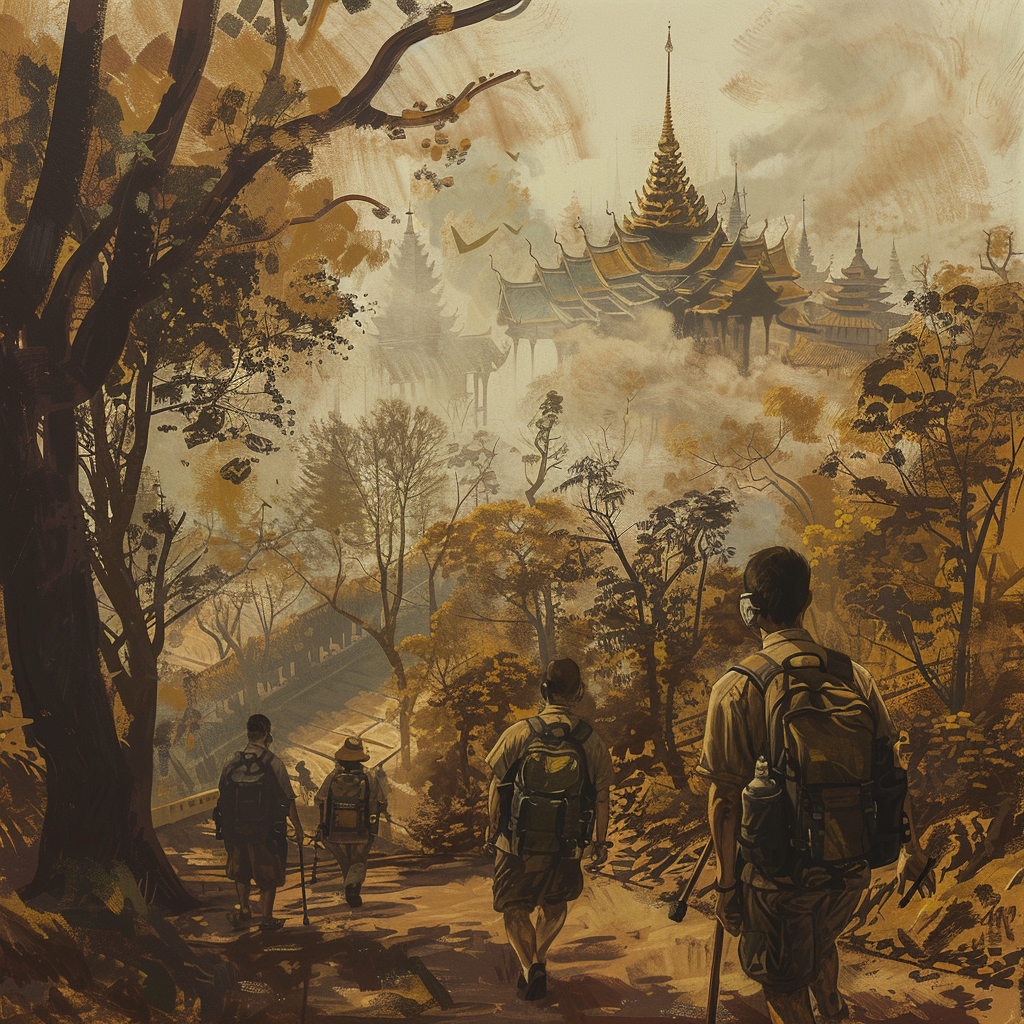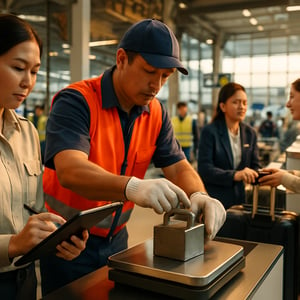Amidst the emerald canopies and the serene landscapes that usually define Chiang Mai, a burgeoning crisis has unveiled itself, turning the picturesque views into scenes reminiscent of a dystopian novel. The tranquil air of Chiang Mai, known for its majestic temples and vibrant culture, has been replaced by a haze that blurs the horizon and chokes the breath of its inhabitants. The local authorities, in a recent announcement on a somber Sunday, expanded the list of areas grappling with this calamity, declaring three additional districts – Chiang Dao, Mae Taeng, and Chai Prakarn – as disaster zones, joining the ranks of Fang and Phrao that had been previously earmarked on April 4.
Nirat Pongsitthavorn, the steward of the province in these trying times, revealed to the world the magnitude of the predicament at their doorstep. The wildfires, akin to dragons of lore, have proven to be indomitable adversaries, with the valiant first responders battling not just the flames but their own mortal limits. Fatigue has set in, a testament to their relentless fight against an unyielding foe. The declaration of these disaster zones is a clarion call, rallying for more firefighters to join the fray, empowering local arms of the government to marshal their resources in quelling the voracious fires.
However, the battle on the ground is just one front in this war. The air that cradles life itself has turned hostile; a silent killer weaves through the city – PM2.5. The Pollution Control Department’s Centre for Air Pollution Mitigation cast a light on the invisible adversary, revealing alarming figures that stretched far beyond the realms of safety. Chiang Mai, along with 36 other provinces, breached the safe threshold, with the city recording the highest PM2.5 level at a staggering 126.1 microgrammes per cubic metre (µg/m³), earning the grim accolade of having the world’s worst air quality by IQAir when levels soared to 190 µg/m³.
In the midst of this crisis, the Geo-Informatics and Space Technology Development Agency (Gistda) attempts to map the enemy, identifying 1,279 hot spots that mar the Northern landscape, including agricultural heartlands. The air, thick with particulates, whispers tales of destruction and a dire warning for the future.
While the immediate threat to life and land is palpable, a silent specter looms in the fog – the long-term impacts on health. Dr. Piamlap Saengsayan, a sage in the realm of pulmonary medicine, ventured into the fog of uncertainty regarding PM2.5 and its role as a harbinger of lung cancer. While causality cloaks itself in ambiguity, the evidence suggests a darker truth; prolonged exposure to this invisible assailant could sow the seeds of cancer in any cell it touches. The body’s defense, in its zeal to protect, might inadvertently pave the path to disease through inflammation, a grim reminder of the price of pollution.
In Chiang Mai, the narrative unfolds as a testament to the resilience of its people and the urgency of addressing environmental degradation. As the city gasps for breath, the community stands united, a beacon of hope and determination in the face of an invisible menace. Yet, the tale is far from over, as each day brings new challenges and a renewed commitment to restoring the sanctity of their home. Amidst the clouds of despair, the spirit of Chiang Mai remains unbroken, a phoenix poised to rise from the ashes of adversity.


















This situation in Chiang Mai shows how we’re blatantly ignoring the planet’s distress signals. It’s past time we all take responsibility and push for global changes in how we treat the environment. How many more disasters do we need to witness before everyone takes action?
While I sympathize with the situation, I don’t think it’s fair to blame humanity as a whole. It’s more complex. There are economic and political factors at play that need consideration. It’s not like everyone can just switch off their carbon footprint.
I get your point, but unless we all start taking drastic steps, these political and economic factors will just lead us further down this path. Individual action matters because it sends a message to those in power about what we find acceptable and what we don’t.
Historically, crises like this have been turning points for societies. It’s crucial that Chiang Mai and the world learn from this, improving emergency responses and focusing on sustainable practices. It’s a wake-up call we shouldn’t ignore.
Exactly, history has shown us time and again that human ingenuity can prevail. But it requires quick action and a willingness to change the status quo. Hopefully, this crisis won’t be forgotten in a few months’ time.
Reading about children breathing in air filled with PM2.5 particles is heartbreaking. I can’t even imagine sending my kids out to play in those conditions. We need to protect our future generations from these health hazards.
Indeed, the long-term effects on health, especially for children, are alarming. It’s crucial that communities come together to find solutions, whether it’s through advocating for better policies or implementing local initiatives to improve air quality.
Absolutely! I’ve been looking into starting a local initiative in my community. We might not be able to change the world overnight, but at least we can make our little corner of it a bit safer for our kids.
Remember to check out air purifiers and indoor plants that can help clean the air in your home too. Small steps can make a big difference!
With all the advances in technology, there has to be a way to better predict and manage wildfires to prevent situations like this. Perhaps more investment into satellite monitoring and AI could make a difference in early detection and containment strategies.
Yes, and don’t forget about the potential for drone technology in firefighting and assessment. The key is getting the right investments in these areas and ensuring they’re available globally, not just in wealthier countries.
Chiang Mai has always been one of my favorite destinations. It’s sad to see it in such a state. Tourism will surely take a hit, and with it, the livelihoods of many locals who depend on it. I hope the international community steps in to help.
As someone living through this, it’s both frightening and infuriating. We’ve been raising concerns about agricultural burning and deforestation for years, and now we’re paying the price. When will the powers that be finally listen?
Your voice is crucial in this fight, and I hope it inspires others to speak up too. Have you noticed any movements or community groups gaining traction locally that others can support to push for change?
[…] of PM 2.5 dust in Chiang Mai, Thailand, has increased at an alarming level until it became the world’s worst air quality. PM2.5 is a measure of particulate matter and an indicator of severe air pollution. Residents have […]
[…] of PM 2.5 dust in Chiang Mai, Thailand, has increased at an alarming level until it became the world’s worst air quality. PM2.5 is a measure of particulate matter and an indicator of severe air pollution. Residents have […]
[…] Since late March 2024, the level of PM 2.5 dust in Chiang Mai, Thailand, has increased at an alarming level until it became the world’s worst air quality. […]
[…] faran'ny volana martsa 2024, nitombo tamin'ny haavo mampanahy mandra-pahatongany ho lasa kalitaon'ny rivotra ratsy indrindra manerantany ny habetsaky ny vovoka PM 2.5 ao Chiang Mai, Thailandy. PM2.5 no fandrefesana singa madinika sy […]